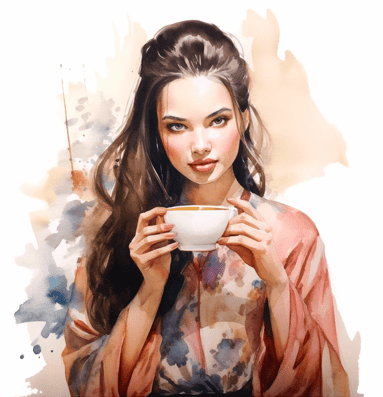
Don’t want to read the whole post?
When it comes to the battle of hojicha vs matcha Japanese teas, hojicha and matcha are two beloved varieties that captivate tea enthusiasts around the world. Neither is an obvious better choice – it all depends on your preferences!
Choose hojicha for a warming roasted flavour, steeped simply. Or choose matcha when you want a unique taste with a calming experience afterwards.
ABOUT ME
Be beauty. Be plant-based!
As a former Registered Nurse and avid plant-muncher, I’m in love with how simple plant-based foods make it so easy to be beautiful.

You’ll also love:
Sencha vs. Matcha: Which Green Tea is Right for You?
Matcha Magic: The Power of Green Tea for Acne-Free Skin
You wake up feeling a bit groggy, craving something warm and comforting to kickstart your day. As you stand in your kitchen, contemplating your options, you’re torn between two enticing types of tea: the roasted tea hojicha or the umami flavour of matcha. Each has its unique characteristics and flavours, and you’re in the mood for something distinct.
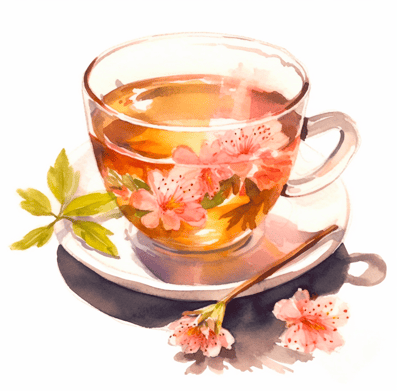
You think about the earthy aroma and rich flavour of a cup of hojicha, a roasted Japanese green tea. It brings back memories of cozy evenings, sitting by the fireplace, wrapped in a blanket. The toasty notes and comforting warmth make it a perfect companion on chilly mornings. You imagine sipping hojicha, feeling its gentle embrace, and slowly awakening your senses.
Skip to: Hojicha: The Roasted Green Tea
On the other hand, matcha calls to you with its bright green colour, velvety texture and unique taste. You remember the energetic and focused state it brings, the meditative experience of whisking the fine powder with hot water. Matcha has been your go-to when you need a little boost, a moment of calm amidst the chaos of daily life. Its grassy sweetness and smooth finish leave you feeling refreshed and rejuvenated.
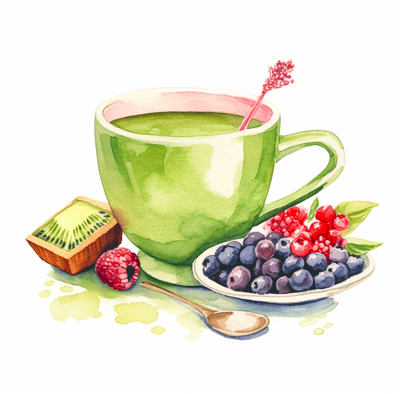
Skip to: Matcha: Whisking a Green Fine Powder
As you stand there, contemplating, you realise that hojicha and matcha both have a place in your life. They cater to different moods and occasions. Hojicha offers warmth and comfort, a gentle embrace to start your day. Matcha, on the other hand, invigorates and centers you, providing a burst of mental energy and clarity.
In the end, you decide to listen to your current needs. Today, you crave the soothing, toasty embrace of hojicha. Tomorrow, you might seek the vibrant, invigorating qualities of matcha. It’s the beauty of having options, being able to choose what resonates with you in the moment. You smile, knowing that whichever path you take, both hojicha and matcha will continue to enrich your tea journey with their unique flavours and calming effects.
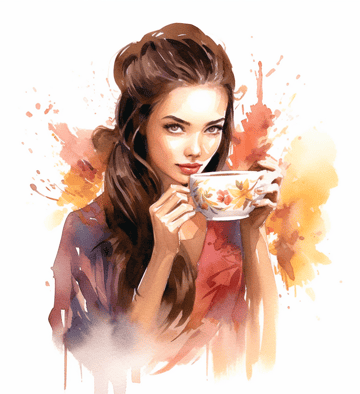
Are you contemplating the benefits of Hojicha vs. Matcha? Both are tasty options to regular green tea. Explore the charms of roasted and powdered Japanese green teas below.
Skip to: From Roasty to Vibrant: The Taste Differences of Hojicha and Matcha
While both offer unique flavours and health benefits, the main differences that distinguish them are in their brewing techniques, caffeine content, and the taste experiences they offer.
So, grab a cup of your favourite green tea and join us on this flavourful journey.
Hojicha: The Roasted Green Tea
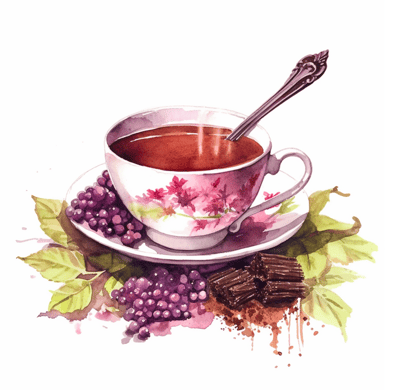
Hojicha, known for its toasty and nutty flavor, is a loose leaf tea. It undergoes a specialised roasting process to create it. This technique transforms roasted green tea leaves into a rich, earthy delight with a distinctive smoky and nutty taste profile.
While the coloor of hojicha is brown, it is actually a type of Japanese green tea. Unlike other green teas that are steamed or pan-fried, Hojicha is made from mature tea leaves that are carefully roasted at high heat. This roasting process not only transforms the leaves into a beautiful brown color but also reduces the caffeine content, making Hojicha a great choice for those who are sensitive to caffeine or prefer a milder tea experience.
Hojicha is steeped in hot water, allowing its roasted essence to infuse slowly for a soothing and comforting experience.
Making Hojicha
- Measure 1-2 teaspoons of Hojicha tea leaves per cup of hot water.
- Preheat your teapot or teacup by rinsing it with hot water.
- Boil fresh, filtered water to around 90-95°C (195-205°F).
- Place the Hojicha tea leaves in your teapot or teacup.
- Pour hot water over the tea leaves, covering them completely.
- Let the tea steep for 1-2 minutes.
- Strain the brewed tea into teacups, if necessary.
- Enjoy the smooth and smoky flavour of your Hojicha tea, hot or iced.
That said, it’s also possible to Hojicha powder if you don’t want to use Hojicha in it’s loose leaf form.
You may also like: Hojicha latte
Matcha: Whisking a Green Fine Powder
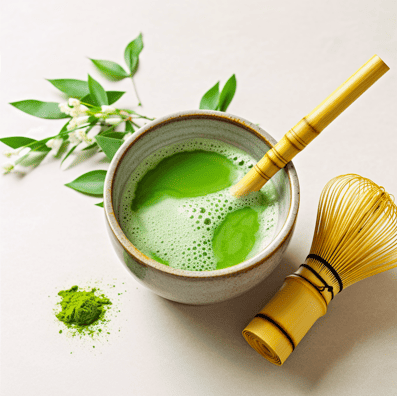
When comparing hojicha vs matcha, matcha is a vibrant and invigorating powdered green tea. It is made from different parts of the tea plant, specifically shade-grown young tea leaves which are then hand-picked and ground into a fine green powder. The brilliant green colour and rich flavour of matcha are a result of the meticulous harvesting and processing methods.
With its ceremonial roots, preparation of a beautiful cup of matcha tea requires a bamboo whisk and a traditional technique to create a frothy, emerald-green tea from the fine powder and hot water.
This traditional method involves using a bamboo whisk called a “chasen” and the whisking process results in a frothy and velvety texture, ensuring that every sip is a harmonious blend of flavours.
In addition to the calming effects of matcha, the whisking of matcha itself is a mindful and meditative ritual.
Making matcha
- Add 1-2 teaspoons of matcha powder into a tea bowl (preferably sifted)
- Add a small amount of hot water (175°F/80°C) to the bowl.
- Whisk the matcha and water vigorously in a “W” or “M” motion until frothy (you can use small spoon or a fork if you don’t have a matcha whisk).
- Add the rest of the hot water and stir.
- Enjoy your matcha tea immediately.
Adjust the matcha powder and amount of water based on your preference. Experiment until find your desired taste!
While culinary matcha is fine when you’re on a budget, it does have a bit of a bitter taste. If you prefer more of a sweet taste, consider ceremonial grade matcha instead.
You may also like:
From Bitter to Better: Distinguishing Good Matcha vs Bad Matcha
From Roasty to Vibrant: The Taste Differences of Hojicha vs Matcha
While both types of green tea, there are key difference in the floors of Hojicha and matcha:
Hojicha: Hojicha has a unique and inviting taste. It has a toasty, nutty, and slightly sweet flavour with a pleasant smoky aroma. The roasting process gives hojicha its distinctive caramelized and earthy flavour. It has a smooth and comforting taste that is well-balanced and soothing.
Matcha: Matcha has a vibrant and rich flavour that is both vegetal and slightly sweet. It offers a unique umami taste with hints of grassiness and a slight bitterness. The flavour is robust and full-bodied, with a smooth and creamy texture. Matcha has a refreshing and invigorating quality that is distinctively enjoyable.
While hojicha provides a mellow and roasted flavour, matcha offers a more vibrant and intense taste. The choice between hojicha and matcha depends on your personal preference for a smoky and toasty profile (hojicha) or a vibrant and velvety green tea flavour (matcha). Both have their unique charm and can be enjoyed in various forms, from tea to latte or even culinary creations.
Caffeine Levels: Hojicha vs. Matcha
Hojicha, being a roasted green tea, undergoes a special process that reduces the amount of caffeine in it. As a result, Hojicha has significantly less caffeine compared to Matcha. This makes it a popular choice for those who are sensitive to caffeine or prefer a milder tea option.
On the other hand, Matcha, made from finely ground green tea leaves, contains a higher concentration of caffeine. The process of shading the tea plants before harvesting increases the production of amino acids, including L-theanine, which helps to balance and mitigate the stimulating effects of caffeine. As a result, Matcha provides a more sustained and focused energy boost without the jitters often associated with other caffeinated beverages.
So, if you’re looking for a tea with lower caffeine content, Hojicha is a great option. However, if you enjoy the energizing effects of caffeine with added calming benefits, Matcha might be the ideal choice for you. It ultimately depends on your personal preference and desired caffeine intake.
Also, in comparison to a cup of coffee, neither have a high caffeine content.
You may also like:
Matcha Magic: The Power of Green Tea for Acne-Free Skin
Culinary Adventures: Beyond the Traditional Teacup
While both teas can be enjoyed in their pure form, they both possess versatility in culinary creations. Matcha, with its fine powder consistency, easily finds its place in delightful desserts like ice cream and baked goods. Meanhwhile, Hojicha’s roasted flavour adds a unique twist to various recipes, uniquely enhancing everything from savoury dishes to sweet treats.
Hojicha vs matcha is a wonderful issue to have in your life. In the world of green tea, Hojicha and Matcha each offer a distinct charm with their different flavours. Whether you prefer the toasty warmth of Hojicha or the vibrant green goddess style of Matcha, both are an excellent choice for creating a warm, refreshing and unique experience.
So, the next time you’re contemplating a cup of green tea, consider whether the roasted delights of hojicha or an invigorating matcha latte best suits your current preference.